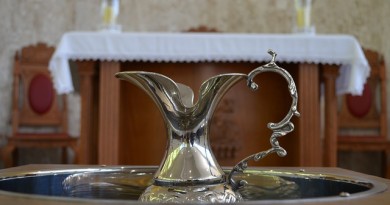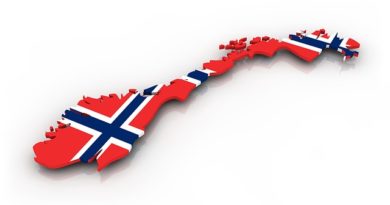Church administration in Norway
Here is a brief look at the administrative units of the Lutheran church in Norway.
This short article is a presentation of how we meet the administrative unit of the Norwegian Lutheran church in the sources we are using. It is important to remember that the boundaries of these unit has changed through time.
Bispedømme – Diocese
Norway is today divided into 11 Lutheran dioceses headed by a bishop (biskop). The diocese is not all that interesting to us genealogists. We may some times find references to the diocese and the bishop in the church records.
Prosti – Deanery
Each diocese is divided into “prosti”. The “prosti” is headed by a provost. The provost is the immediate superior of the parish priest (sognepræst or sogneprest) but is normally also a parish priest in one of the local parishes. Several “prostier” form a Diocese (bispedømme). (Wikipedia).
The “prosti” does not appear in the church records. There are however, some cases where it can be interesting to look at the prosti. I will come back with a separate article about this.
Prestegjeld – parish
Each “prosti” was divided into a number of “prestegjeld”. 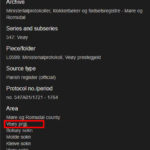 A Prestegjeld was a geographic and administrative area within the Lutheran church. This traditional designation was in use for centuries to divide the kingdom into ecclesiastical areas that were led by a parish priest who may have had assistant priests. Prestegjeld was introduced in the 1400’s and were officially discontinued in 2012 (Wikipedia).
A Prestegjeld was a geographic and administrative area within the Lutheran church. This traditional designation was in use for centuries to divide the kingdom into ecclesiastical areas that were led by a parish priest who may have had assistant priests. Prestegjeld was introduced in the 1400’s and were officially discontinued in 2012 (Wikipedia).
The prestegjeld (parish) is one of the units that is of importance for us when we try to localise our ancestors. The church records are identified by county, parish and localparish.
Looking at the “Source information” that is found with all scanned images in the Digitalarkivet , we see the parish clearly stated. Abbreviated “prgj.” (Hover mouse over pictures to enlarge).
Sogn/Sokn – localparish
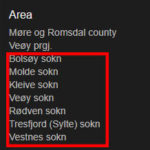 Each parish is divided into several “sogn” (Nynorsk: Sokn). The word have been translated to “subparish” or “localparish”. Digitalarkivet use the word “localparish” so I choose to go with that.
Each parish is divided into several “sogn” (Nynorsk: Sokn). The word have been translated to “subparish” or “localparish”. Digitalarkivet use the word “localparish” so I choose to go with that.
Also the “sogn” is important for us to localise our ancestors. Again the “sogn” is clearly stated in the source information in the Digitalarkivet.
Even though there are a few localparishes that have more that one church, it can be considered as the congregation belonging to one church.
If you look at my article How I record Norwegian locations you can see that I record (Farm), local parish, parish, county to clearly identify a person.
The church closest to the rectory is some times referred to as the “main church” (Hovedkirken). Often the parish is named after this church.
People’s church rituals most often took place in the localparish where they lived. Nevertheless, as one (or a few) priests served several localparishes, there was not held service in every church every Sunday. This meant that people often travelled to the next church in the parish to have their needs taken care of.
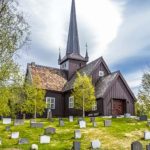 People living on the outskirts of a parish sometimes had shorter travelling distance to a church in a different parish. I have seen some examples of people crossing the parish boundary to e.g. have children baptised. In such cases a note should be sent to the correct parish about the clerical action performed. The information should be added to the church record. This was not always done. If wedding couples came from different (local)parishes, my experience is that the wedding often took place in the home parish of the bride. This is by no means a set rule.
People living on the outskirts of a parish sometimes had shorter travelling distance to a church in a different parish. I have seen some examples of people crossing the parish boundary to e.g. have children baptised. In such cases a note should be sent to the correct parish about the clerical action performed. The information should be added to the church record. This was not always done. If wedding couples came from different (local)parishes, my experience is that the wedding often took place in the home parish of the bride. This is by no means a set rule.
The only clerical action we can be fairly certain to find in a person’s local parish is funerals (as long as he or she died at7near their home).
As we see in the example from Veøy, seven localparishes were registered in the same book. I find it hard to believe that the priest brought the book with him, through wind and rain and over rough seas. The church book was kept at the rectory and the priest had to take notes on loose sheets of paper when traveling to the different localparishes (Thorvaldsen 1996:84). We can see how this easily can lead to information being lost.
From 1812 each local parish were to be registered separate church books, and a copy, the “klokkerbok” were to be kept at the local parish (Carlsen 2006:9). We can see this change take effect in the years after 1812. (Veøy parish started this practice in 1818).
To determine which parish/localparish to search I suggest you look at my articles Find Norwegian place names, and Old boundaries in Norway
For a general intro to Norwegian church records read The Norwegian Church books.
Please don’t hesitate to comment below or send me a word through the “Contact page” if you have questions.
I am very happy if you share this blog with your fellow genealogists.
Sources:
Nina Hveem Carlsen: Prestens bok til åndelig og verdslig bruk, Arkivmagasinet nr 1 2006, Det Norske Arkivverket
Gunnar Thorvaldsen: Håndbok i registrering og bruk av historiske persondata [Oslo] : Tano Aschehoug, 1996
Wikipedia: Various articles linked directly in the text.




